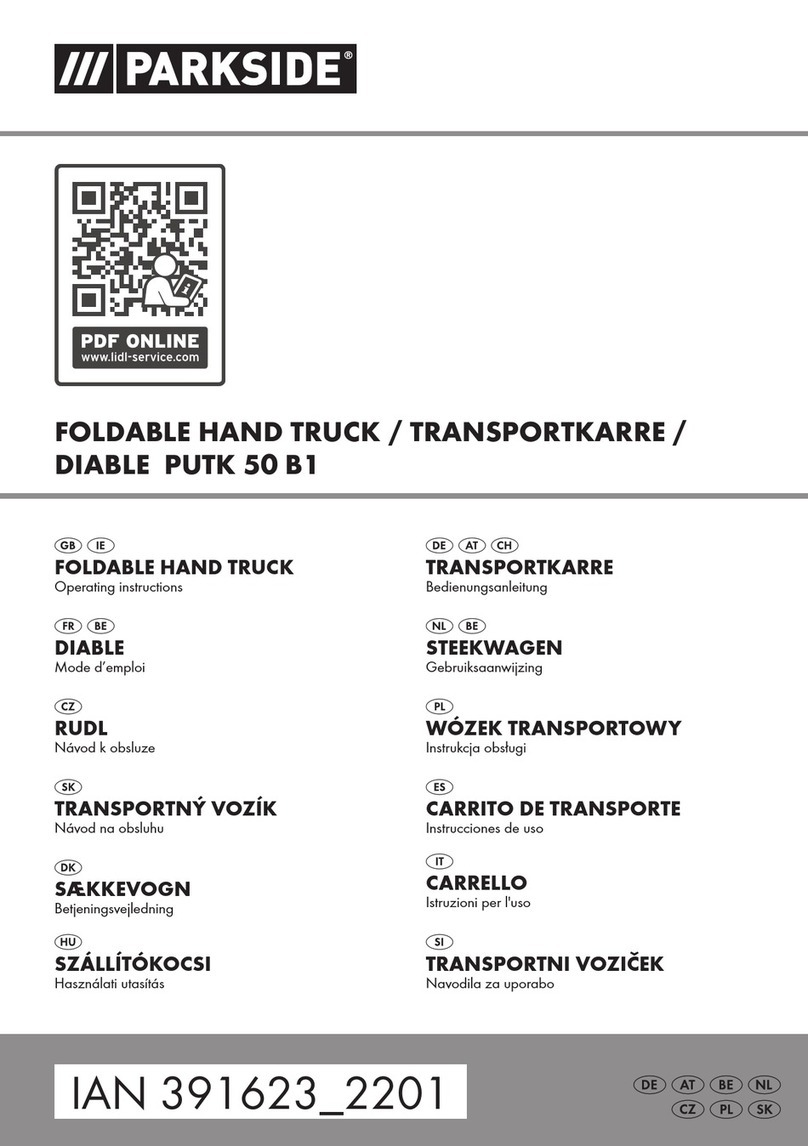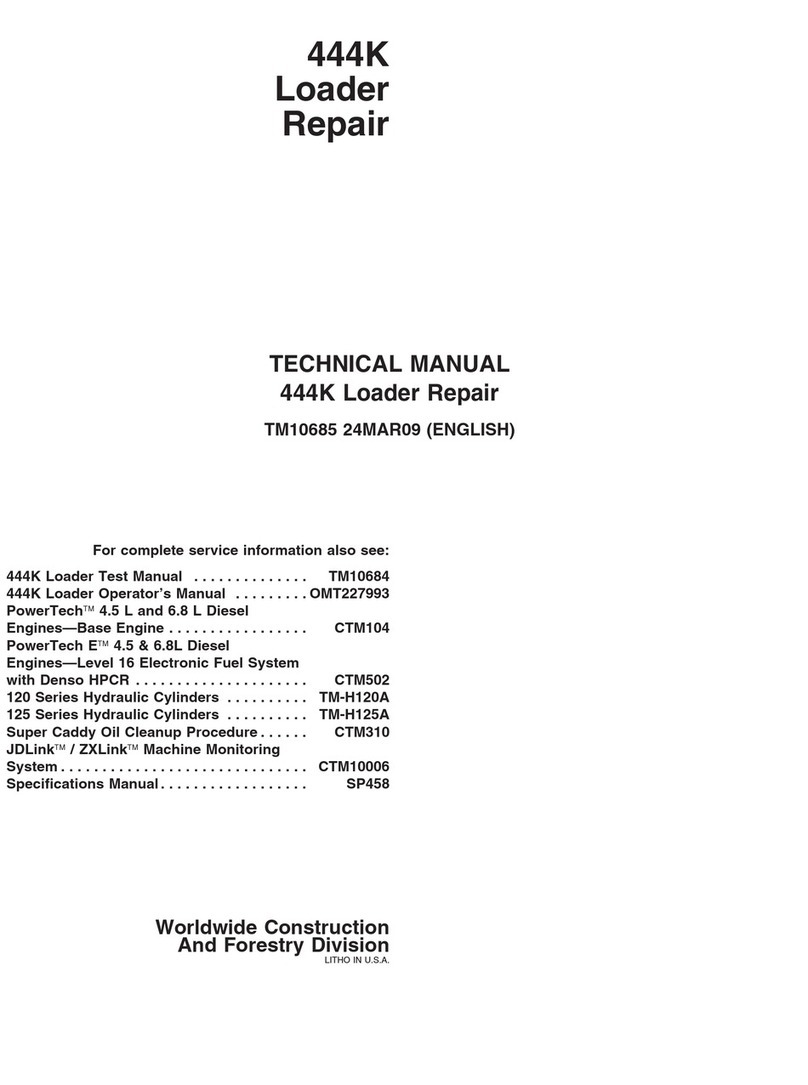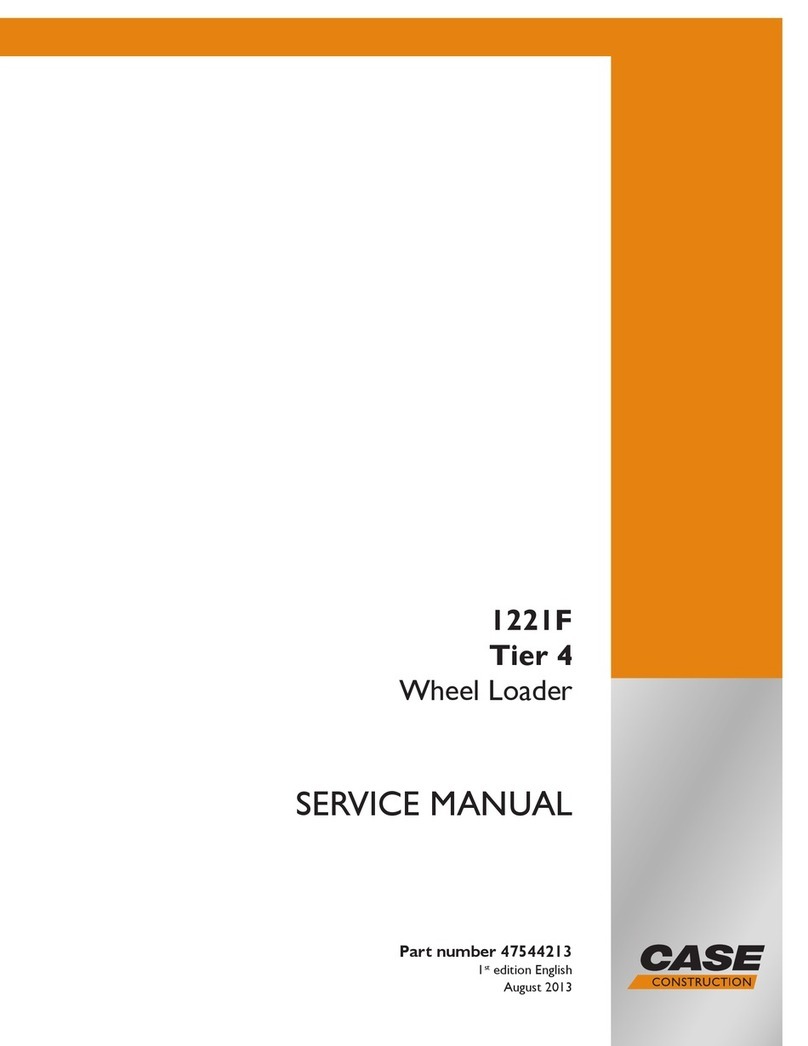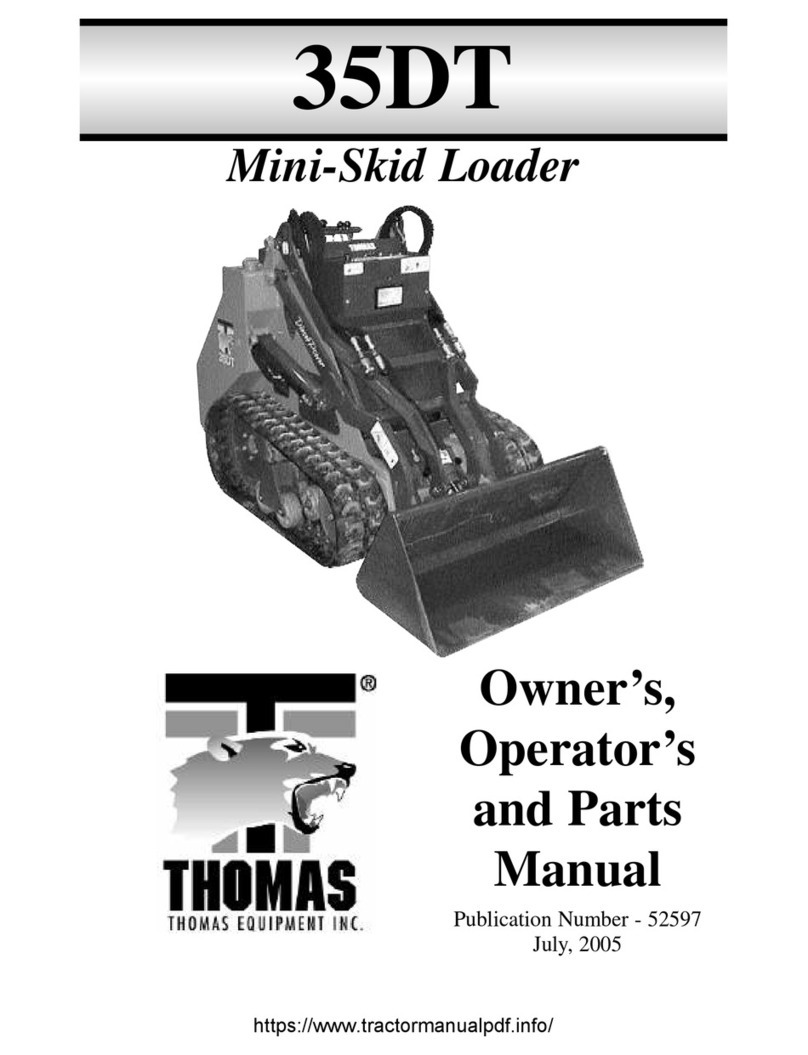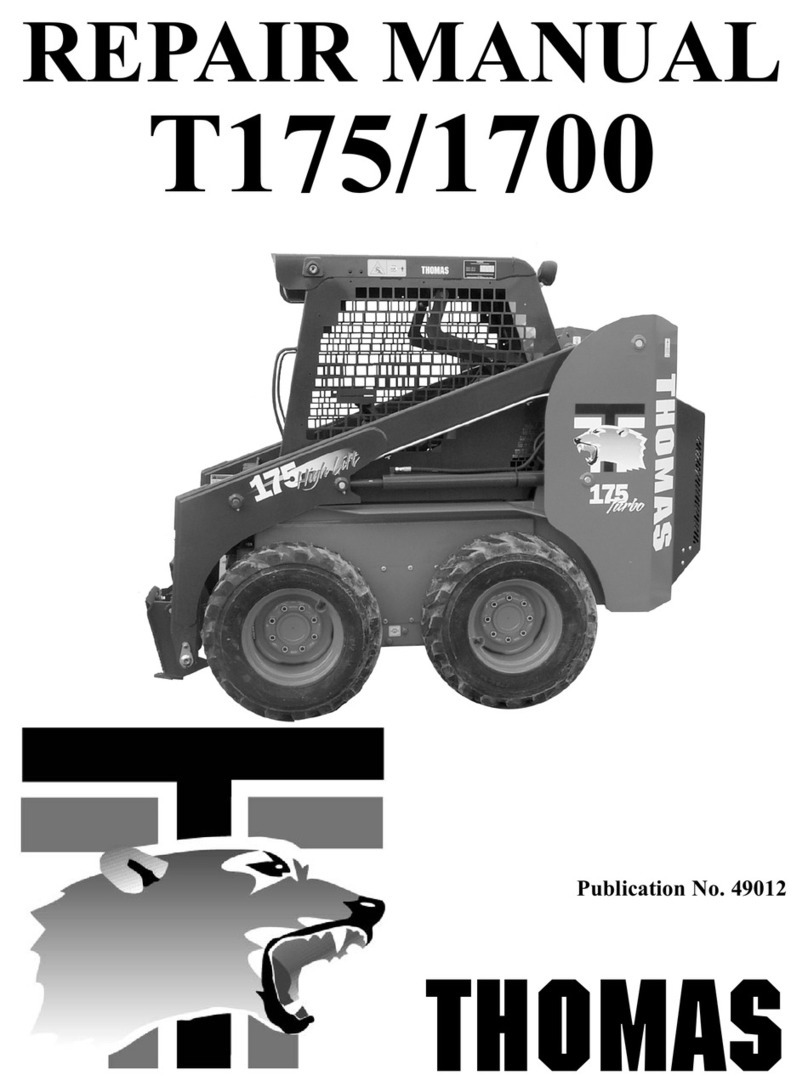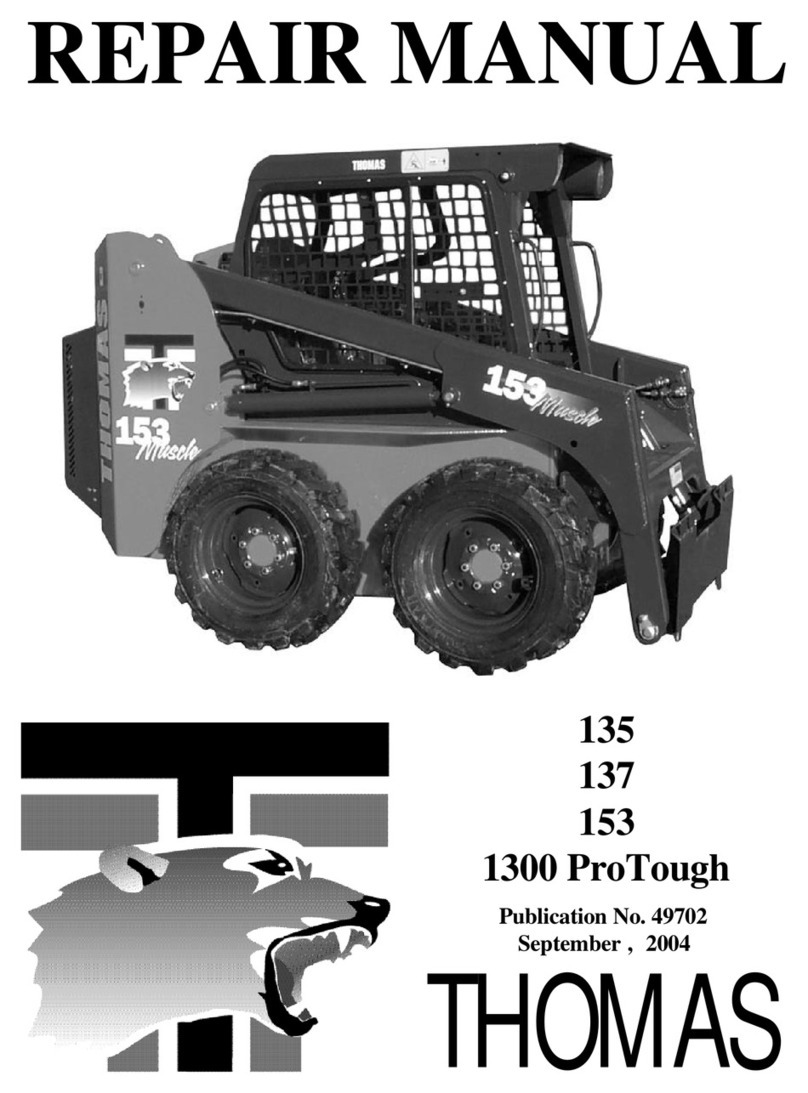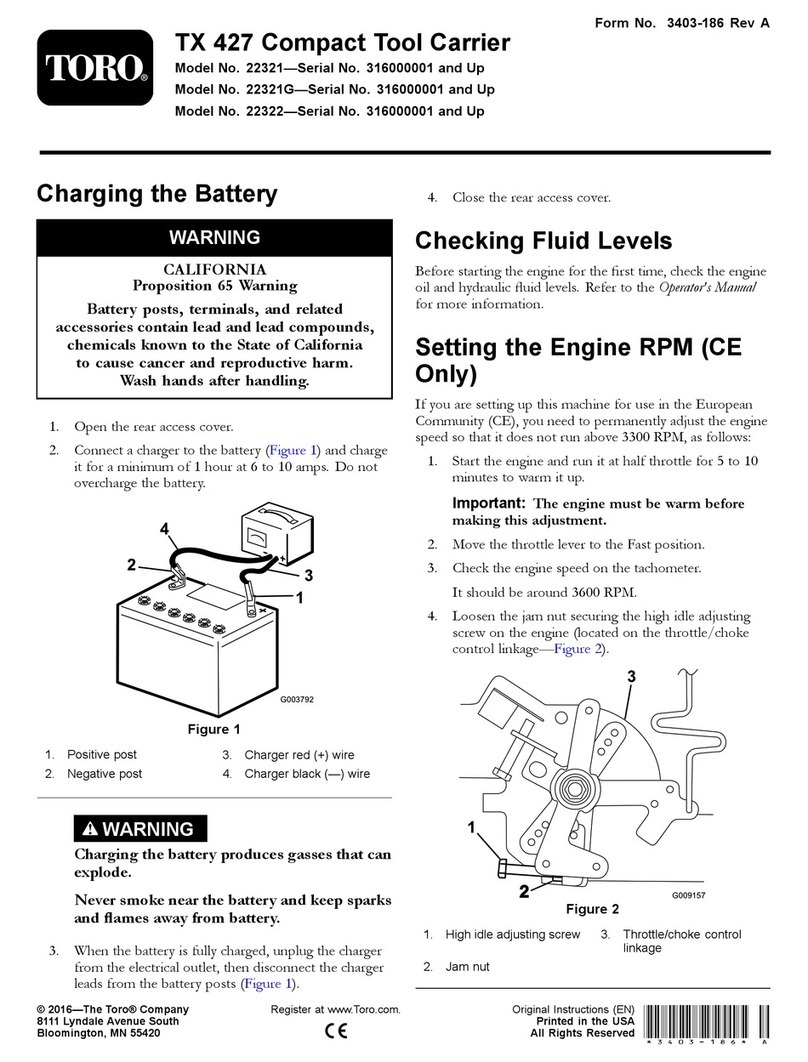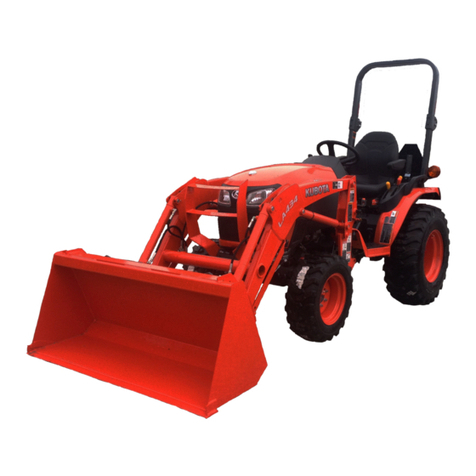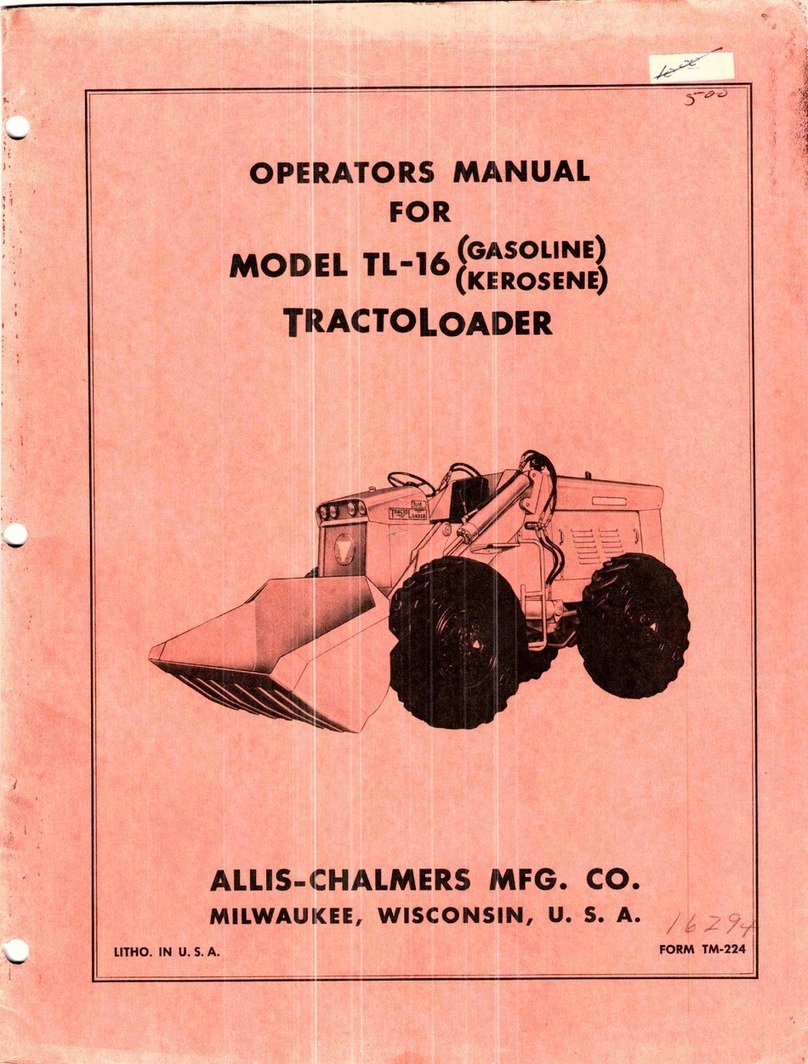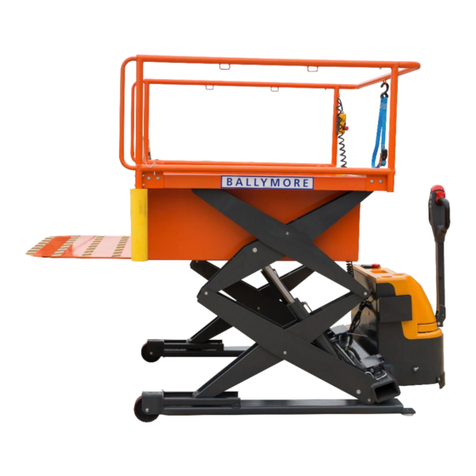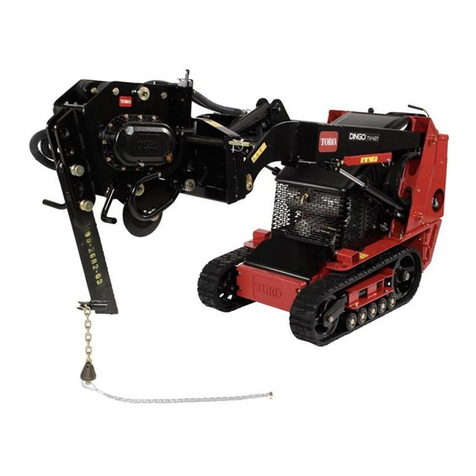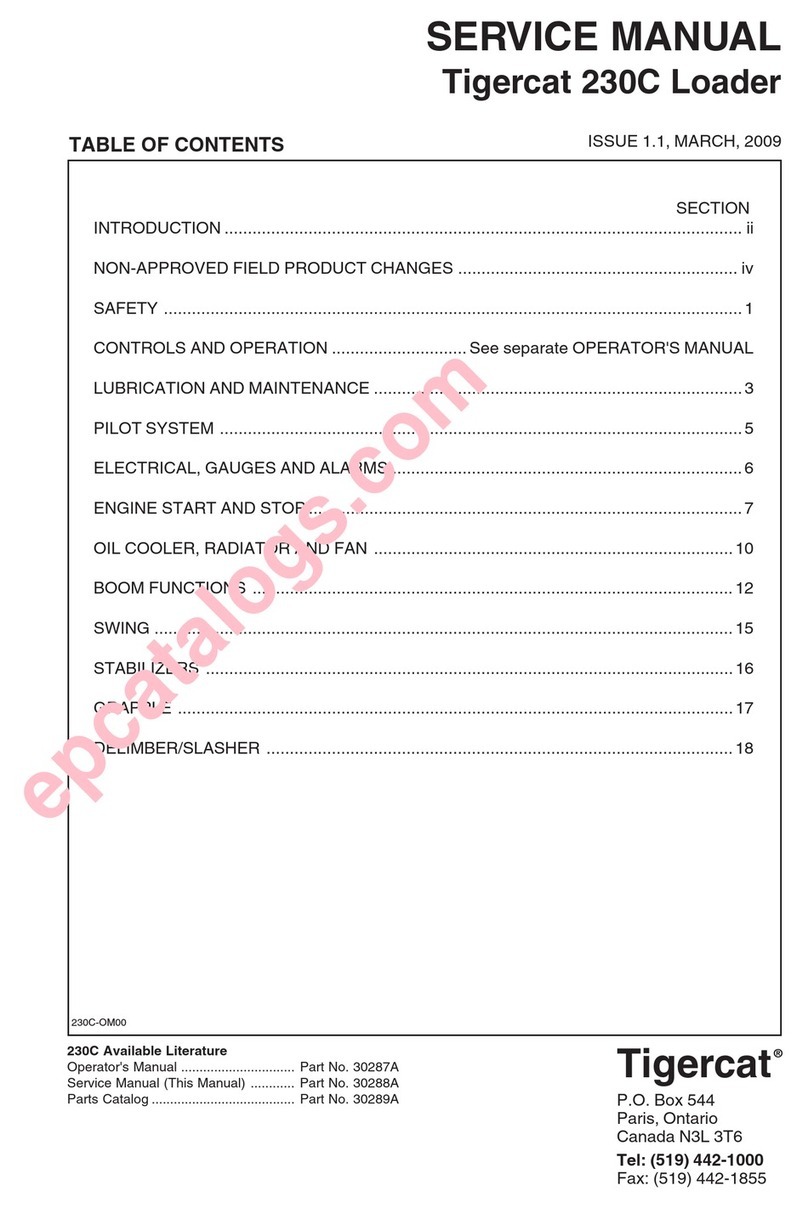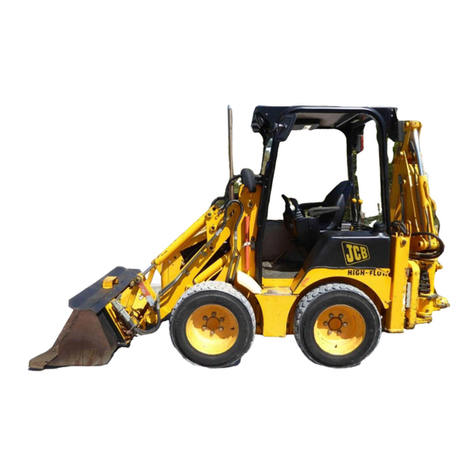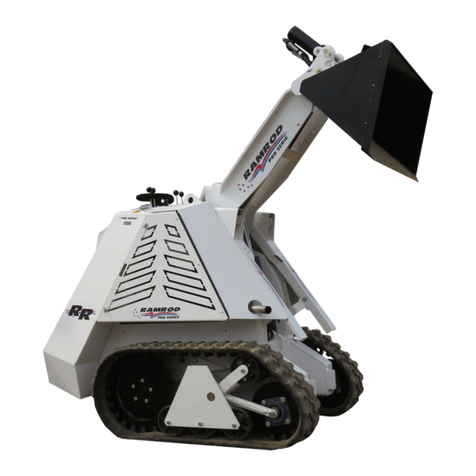
3
THE LOADER
1. Read this manual carefully before using the loader.
Working with unfamiliar equipment can lead to
accidents.
2. Do not allow anyone to ride on the loader with the
operator.
3. Make sure the seat bar is installed and functioning at all
times.
4. Never run the engine in a closed building without
adequate ventilation, as the exhaust fumes can cause
death.
5. Always fasten the seat belt around your waist before
starting the engine. Never fasten the seat belt behind
you.
6. Never attempt to start the engine while standing beside
the unit unless as specified in this manual or under
service procedures and backhoe operations. Start the
engine only while sitting in the operator’s seat with the
seat belt fastened around you. Always check to make
certain that the seat cushion is secured to the frame.
7. Keep the operator’s platform free of debris.
8. Never enter or leave the loader while the engine is
running. Always lower the lift arms down against the
frame, drop the attachment down to contact the ground,
set the parking brake and shut off the engine prior to
leaving the loader.
9. If the unit is equipped with a cab enclosure kit always
close the door prior to operating the loader lift arms.
10. Do not operate the loader unless all safety equipment,
shields, seat belt, seat bar, foot pedal and steering lever
locks, parking brake, operator guard, and boom support
are working properly, as well as all safety and
instruction decals are in place.
OPERATING THE LOADER
1. Always drive the loader at speeds compatible with
safety, especially when operating over rough ground,
crossing ditches or when turning.
2. Avoid jerky turns, starts, stops, or reverses.
3. Use care when operating on steep grades to maintain
proper stability.
4. Do not turn the loader while the lift arms are in the
raised position.
5. Be careful when driving through door openings or
under overhead objects. Always make sure there is
sufficient clearance for the operator’s guard.
6. When travelling on public roads, know the local rules
and regulations and make sure your loader is equipped
with the proper safety equipment.
7. Always be sure of water, gas, sewage and electrical
line locations before you start to dig.
8. Watch out for overhead and underground high-voltage
electrical lines when operating the loader.
9. Always park the loader on level ground where possible.
If the loader is to be parked on an incline, always lower
the attachment so that it contacts the ground, set the
parking brake and block the wheels.
10. Do not leave the loader when it is in motion.
11. Do not dismount from the loader and leave the loader
lift arms raised unless following specific service
procedures. Always lower the lift arms down against
the frame and drop the attachment down to contact the
ground.
12. Always be watchful of bystanders when operating the
loader.
13. Always carry the attachment low for maximum
stability and visibility.
14. Exercise extreme caution when operating the loader
with a raised, loaded attachment or fork.
15. Never attempt to lift loads in excess of loader capacity.
16. Check that the foot pedals are locked before getting out
of the operator’s seat.
MAINTENANCE
1. Stop the engine before performing any service on the
loader.
2. Never refuel the loader while smoking or with the
engine hot or running.
3. Replace all missing, illegible or damaged safety and
warning decals. (See Section 5. 4 for list).
4. Do not modify or alter, or permit anyone to modify or
alter this loader or any of its components or any loader
function.
5. Do not bypass the safety system. Consult your
Thomas
Equipment Dealer if your safety controls are
malfunctioning. Use booster cables only in
recommended manner. (See Section 3. 10).
6. Do not make mechanical adjustments while the loader
is in motion or when the engine is running. However, if
minor engine adjustments must be made, securely
block the loader with the wheels clear of the ground
and use extreme caution.
7. Do not attempt to repair or tighten hydraulic hoses
when the system is under pressure, when the engine is
running or when the lift arms are raised.
8. Do not get under the attachment or lift arms or reach
through the lift arms when they are raised.
9. Never attach the chains or ropes to the operator’s guard
for pulling purposes, as the loader can tip over.
10. Whenever servicing or replacing pins in cylinder ends,
buckets, etc., always use a brass drift and a hammer.
Failure to do so could result in injury from flying metal
fragments.
11. Cooling system operates under pressure which is
controlled by the radiator cap. It is dangerous to
remove the cap while system is hot. Always turn cap
slowly to the first stop and allow the pressure to escape
before removing the cap entirely.
1 SAFETY PRECAUTIONS
The following precautions are suggested to help prevent accidents.
A careful operator is the best operator. Most accidents can be avoided by observing certain precautions. Read and take the
following precautions before operating this loader to help prevent accidents. Equipment should be operated only by those
who are responsible and instructed to do so.

